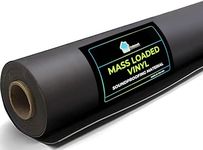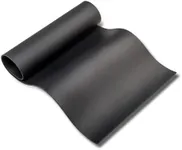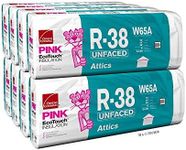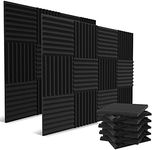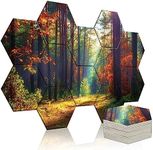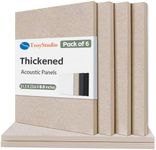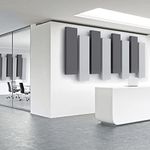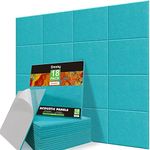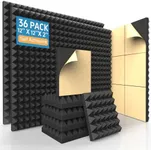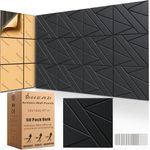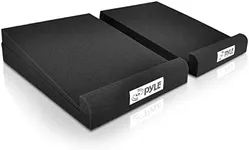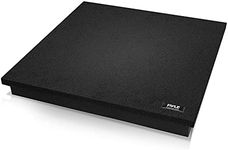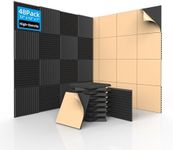Buying Guide for the Best Soundproofing For Walls
When it comes to soundproofing your walls, it's essential to understand the various factors that contribute to effective noise reduction. Soundproofing can help create a quieter and more peaceful environment by minimizing the amount of sound that travels through walls. To choose the best soundproofing solution for your needs, you'll need to consider several key specifications. These specifications will help you determine the effectiveness of different soundproofing materials and methods, ensuring you make an informed decision that suits your specific requirements.STC RatingThe Sound Transmission Class (STC) rating measures how well a material or wall assembly can block airborne sound. This rating is crucial because it gives you an idea of how effective the soundproofing material will be at reducing noise. STC ratings typically range from 25 to 65, with higher numbers indicating better soundproofing. For example, an STC rating of 25 means you can hear normal speech through the wall, while an STC rating of 50 means loud speech is barely audible. To pick the right STC rating for you, consider the level of noise you need to block. For a home office or bedroom, an STC rating of 40-50 is usually sufficient, while a recording studio may require an STC rating of 55 or higher.
Material DensityMaterial density refers to the mass per unit volume of the soundproofing material. Denser materials are generally more effective at blocking sound because they provide more mass for the sound waves to travel through, which reduces their energy. Common dense materials used for soundproofing include mass-loaded vinyl, gypsum board, and acoustic panels. When choosing a material, consider the type of noise you're dealing with. For low-frequency sounds like bass or traffic noise, denser materials are more effective. For higher-frequency sounds like voices or music, a combination of dense and absorptive materials may work best.
Installation MethodThe installation method of soundproofing materials can significantly impact their effectiveness. Some materials are designed to be installed directly onto existing walls, while others may require building new wall assemblies or adding additional layers. Common installation methods include adding mass-loaded vinyl, using resilient channels, or constructing double walls. The right installation method for you depends on your existing wall structure and the level of soundproofing you need. For minimal disruption, consider materials that can be added to existing walls. For maximum soundproofing, more extensive methods like building double walls may be necessary.
Absorption CoefficientThe absorption coefficient measures how well a material can absorb sound energy, preventing it from reflecting back into the room. This is important for reducing echo and improving the overall acoustics of a space. Absorption coefficients range from 0 to 1, with higher values indicating better absorption. Materials like acoustic foam panels, fiberglass insulation, and fabric-wrapped panels typically have high absorption coefficients. To choose the right absorption material, consider the type of noise and the room's purpose. For example, in a home theater, high absorption materials can enhance sound quality, while in a living room, moderate absorption may be sufficient to reduce echo.
ThicknessThe thickness of soundproofing materials can affect their ability to block and absorb sound. Thicker materials generally provide better soundproofing because they offer more mass and can absorb more sound energy. Common thicknesses for soundproofing materials range from 1/2 inch to several inches. When selecting the thickness, consider the space you have available and the level of soundproofing you need. Thicker materials are ideal for high-noise environments like recording studios, while thinner materials may be sufficient for residential spaces where moderate noise reduction is needed.
